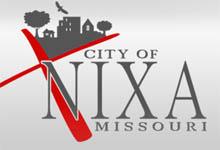“Fiber is the key to assuring Palo Alto's long-term position as the Leading Digital City of the Future"
That was Palo Alto Mayor Greg Scharff who was giving his State of the City Address at Tesla Motors in February.
Mayor Scharff described 2013 as "the year of the future" for Palo Alto, with technology and infrastructure as two of the city's most pressing priorities. Scharff called for developing a plan to expand and optimize the city's current 33 miles of fiber with the aim to bring that fiber to homes and businesses. Scharff echoed the recent Gigabit City Challenge, offered by FCC Chairman Genachowski, noting that Palo Alto users should be have access to 1 gig, minimum.
Jason Green of the Mercury News reported on Scharff's speech in which he referenced the city's long desire to provide high speed access to residents:
"Ultra-high-speed Internet has been a Palo Alto vision for a long time. Now is the time to fulfill that vision," Scharff said. "Google has recently deployed ultra-high-speed Internet in Kansas City. Palo Alto can do better and has all of the elements that will make this a success."
Scharff also referred to how the city is currently using its fiber and some of the benefits:
“In 1996, our city built a 33-mile optical fiber ring routed within Palo Alto to enable better Internet connections. Since then, we have been licensing use of this fiber to businesses. For the past decade, this activity has shown substantial positive cash flow and is currently making in excess of $2 million a year for the city. We now have that money in the bank earmarked for more fiber investments."
We spoke with Josh Wallace, from Palo Alto's Fiber Optic Development, in episode 26 of the Broadband Bits podcast about how the city uses dark fiber to connect businesses. As we noted in the past, a thorn in the side of Palo Alto's plan to offer lit services is Comcast, which has been willing to engage in dirty tricks in other communities to stop community owned networks.
A recent Palo Alto Online article by Gennady Sheyner, reported on the most recent joint meeting between the City Council and the Utilities Advisory Commission. Like the Mayor, both bodies decided exploration of uses of city fiber must be a priority.
While Palo Alto has wrestled with expanding the use of its fiber in the past, things appear to be changing. From the article:
But perhaps the biggest change between the city's previous stabs at the fiber project and its current exploration has to do with perspective. Before, city officials viewed the effort strictly in utility terms, with low costs and no risks being key requirements. In 2008, the city explored a partnership with an Internet consortium to create a $45 million citywide system. The group, led by Axia Netmedia Corporation, withdrew from the partnership in May 2009 after the global economy tanked, one of its financing partners withdrew and the city declined to subsidize the network with a contribution of $3 million to $5 million annually.
A 2012 utilities commission recommendation, based on work from two separate consultants, did not endorse the idea of pursuing a fiber-to-the-premise build out. Attitudes have since shifted:
But utilities commissioners and council members agreed Monday that project warrants re-examination, even if the economic argument is difficult to make.
"If you look at it from the utility's standpoint, it's hard to get it to work," said Commissioner John Melton, who had dissented in the June vote along with Foster and Asher Waldfogel. "If you look at it from a broader perspective, it may well make a lot of sense."
We would say the different evaluations are based on what value one places on the many indirect benefits of a network, such as more jobs, a real choice for residents, and the cost savings everyone experiences in the newly competitive environment. A privately owned company would not consider these benefits as part of its return on investment, but a community can. Not all do, but sometimes it just takes a few local leaders to step up and change the frame.
The success of the dark fiber network has eased some anxiety from city leaders and the discussion is moving forward. In February, the City Council declared "technology and the connected city" an official priority for 2013. Also from the article:
Dexter Dawes, who chaired the utilities commission at the time it was considering the earlier [unfavorable] fiber proposal, said that the council's framework for looking at the project will make a difference in the commission's work.
The commission, he said, "has been challenged by having chains on them by considering it on a risk-free basis where there would be no subsidies from the city," Dawes said. "It will be a tough job figuring this out, but I think this can be done."
In 2014, we hope to be able to report that 2013 WAS the year of the future for Palo Alto. Regardless of whether or not they eventually decide to offer more than dark fiber, we are pleased to see city leadership reconsidering the possibilities.





